Shipping all over European Union ![]() from Romania
from Romania ![]()
- November 17, 2024
10 Easy-care succulents for beginners
-
by Oana
Contents Summary
Intro:
Succulents are the perfect plants for beginner gardeners, thanks to their low-maintenance needs and striking appearance. Whether you’re looking for indoor greenery or hardy outdoor plants, these easy-care succulents are simple to grow and add a touch of nature to your space. Read on to discover the best succulents for beginners and tips to keep them thriving.
1. Aloe Vera
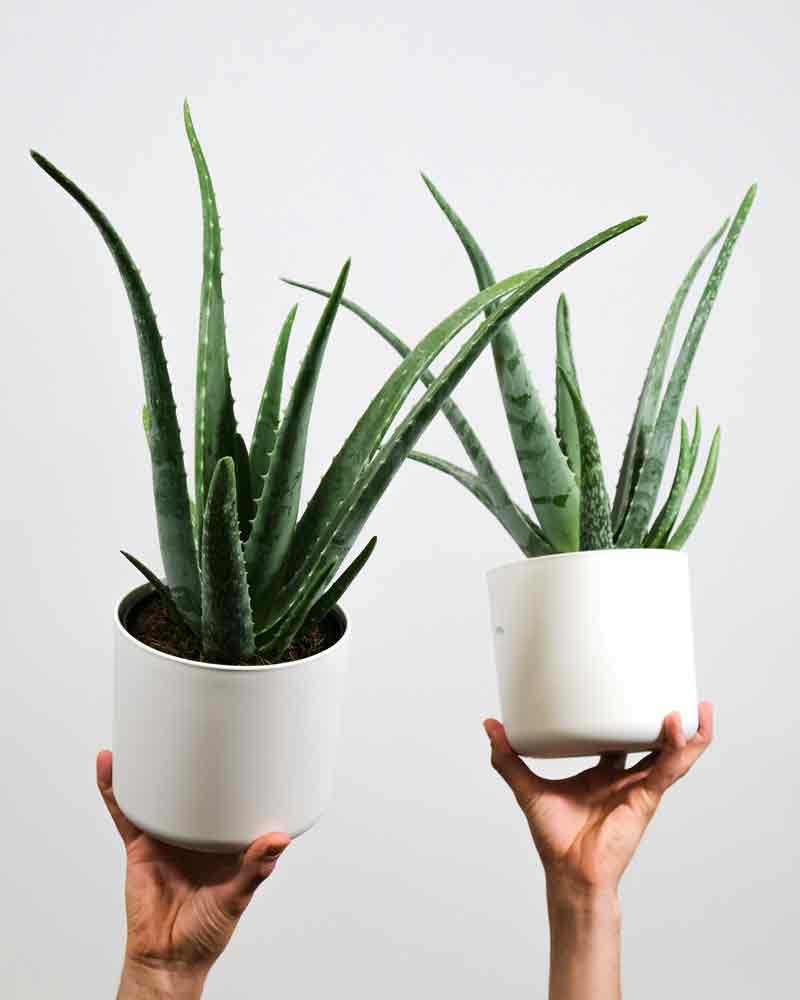
- Famous for its medicinal properties, Aloe Vera is an easy-care succulent that thrives on neglect. Just place it in a bright spot and water sparingly.
- Bright Spot Required: While it tolerates low light, Aloe Vera thrives best in bright, indirect sunlight. Too much direct light can scorch its leaves.
- Minimal Feeding Needs: Fertilize with a succulent fertilizer only once or twice a year during the growing season (spring and summer).
- Medicinal Use: Always use mature Aloe Vera leaves for gel extraction, as younger leaves may lack potency.
2. Echeveria
- Known for its rosette-shaped leaves, Echeveria comes in various colors, sizes, and textures, making it a favorite among beginners. These succulents are perfect for adding a splash of elegance to your indoor or outdoor garden.
- Popular Echeveria Varieties:
- Echeveria Elegans (Mexican Snowball): A classic choice with pale blue-green rosettes and pink-tinged edges.
- Echeveria Perle von Nurnberg: A stunning variety with purple-pink leaves that develop richer colors in bright light.
- Echeveria Agavoides (Lipstick Echeveria): Recognizable by its triangular green leaves with vibrant red edges.
- Echeveria Black Prince: A dramatic succulent with dark, almost black rosettes that contrast beautifully with lighter plants.
- Echeveria Chroma: A multicolored variety that shifts between hues of pink, orange, green, and purple depending on lighting.
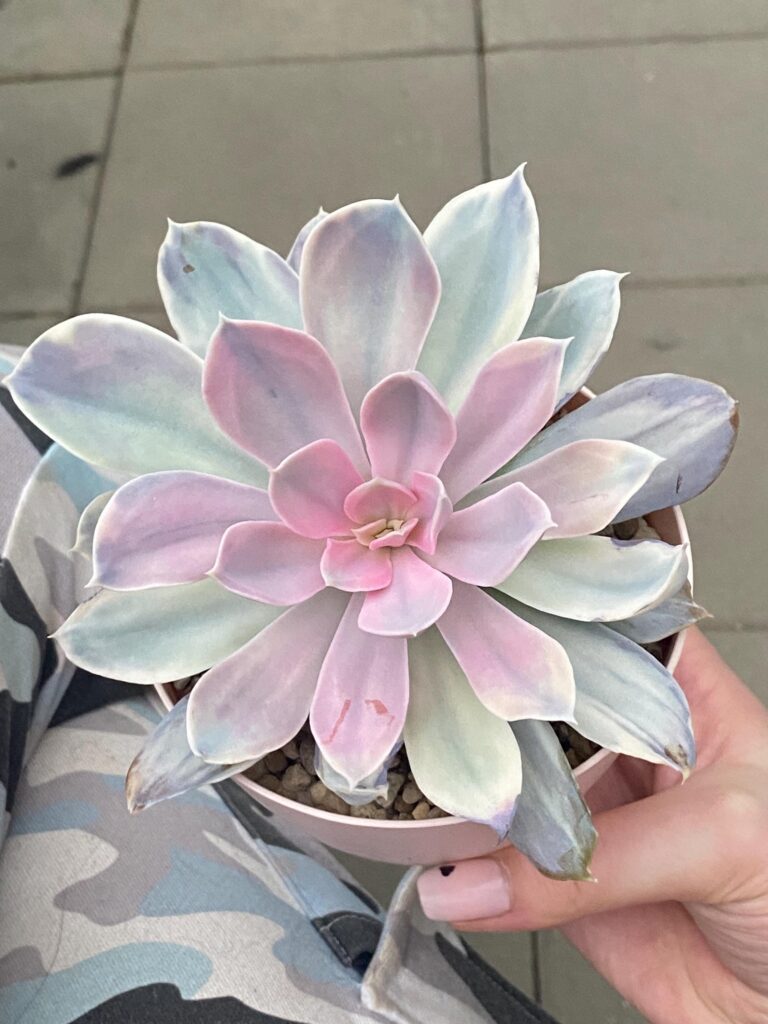
3. Jade Plant (Crassula Ovata)

- With its thick, glossy leaves, the Jade Plant is a classic indoor succulent that’s incredibly easy to care for. It’s slow-growing and can live for decades, making it a great investment for your plant collection.
- Unique Growth Feature:
- Natural Bonsai Appearance: As the Jade Plant matures, its stem thickens and hardens, resembling a tree trunk. This characteristic makes it a popular choice for bonsai-style artistic creations.
- Many enthusiasts prune and shape Jade Plants into miniature trees, enhancing their aesthetic appeal and creating stunning bonsai displays.
- Over time, the plant develops a woody base and branching pattern, adding to its charm and longevity.
Bonus Tips:
- Symbol of Prosperity: In many cultures, the Jade Plant is considered a symbol of good luck and prosperity, often placed near entryways or windows.
4. Snake Plant (Sansevieria)
- The Snake Plant, also known as Mother-in-Law’s Tongue, is one of the most resilient indoor plants. It’s known for its upright, sword-like leaves that come in various patterns and shades of green.
- Air Purifier: Snake Plants are excellent for improving air quality. They absorb toxins like formaldehyde and benzene and even release oxygen at night, making them ideal bedroom plants.
- Varieties to Try:
- Sansevieria Trifasciata Laurentii: Recognized for its yellow-edged leaves.
- Sansevieria Moonshine: Features silvery-green leaves for a modern look.
- Sansevieria Cylindrica: Unique with cylindrical, spike-like leaves.
- Low Light Champion: Snake Plants can survive in low-light areas but grow best in bright, indirect sunlight.

5. Sedum (Stonecrop)
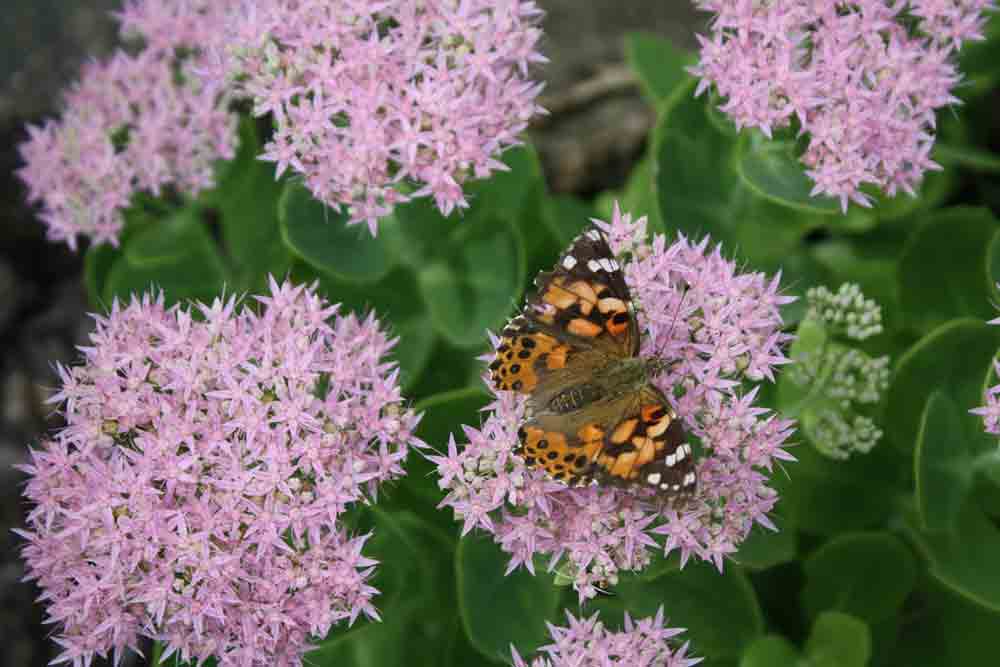
- Sedums, commonly called Stonecrop, are a versatile group of succulents that thrive in various conditions. They’re known for their small, fleshy leaves and ability to form sprawling ground covers or upright clusters.
- Care Tip: They prefer full sun in order to keep their compact appearance.
- Perfect for Outdoors: Sedums are hardy and often used in rock gardens, green roofs, and xeriscaping due to their drought tolerance.
- Varieties to Explore:
- Sedum Autumn Joy: Tall, upright sedum with pink flowers that attract pollinators.
- Sedum Reflexum (Blue Spruce): Resembles spruce needles, perfect for ground cover.
- Sedum Rubrotinctum (Jelly Bean Plant): Has colorful, jelly-bean-shaped leaves.
- Pollinator Magnet: Many sedums produce clusters of star-shaped flowers that attract bees and butterflies.
6. Haworthia
- Haworthias are small, charming succulents known for their rosette shape and striking leaf patterns. They are closely related to aloe but are smaller and more compact.
- Varieties to Try:
- Haworthia Fasciata (Zebra Plant): Recognizable by its striped leaves.
- Haworthia Cooperi: Features translucent, bubble-like leaves.
- Haworthia Retusa: Has flat, triangular leaves that resemble a star.
- Ideal for Small Spaces: Their compact size makes them perfect for desks, windowsills, or small planters.
- Shade Tolerant: Unlike many succulents, Haworthias can tolerate low to medium light conditions.

7. Kalanchoe Tomentosa (Panda)

- The Panda Plant is a unique succulent with velvety, silver-green leaves edged with reddish-brown markings. Its soft, fuzzy texture makes it a favorite for plant enthusiasts.
- Tactile Appeal: The fuzzy leaves are not just attractive but also help the plant retain moisture in dry environments.
- Pet Precaution: While it’s beautiful, the Panda Plant is toxic to pets, so keep it out of reach of cats and dogs.
- Long-Lived Beauty: With minimal care, this plant can live for many years, gradually growing taller and branching out.
8. String of Pearls (Senecio Rowleyanus)
- A trailing succulent with bead-like leaves, the String of Pearls is a stunning plant that adds a whimsical, cascading effect to shelves or hanging planters.
- Flowering Bonus: String of Pearls can produce small, white, cinnamon-scented flowers under the right conditions.
- Propagation Made Easy: Snip off a strand, lay it on soil, and watch it root quickly to create new plants.
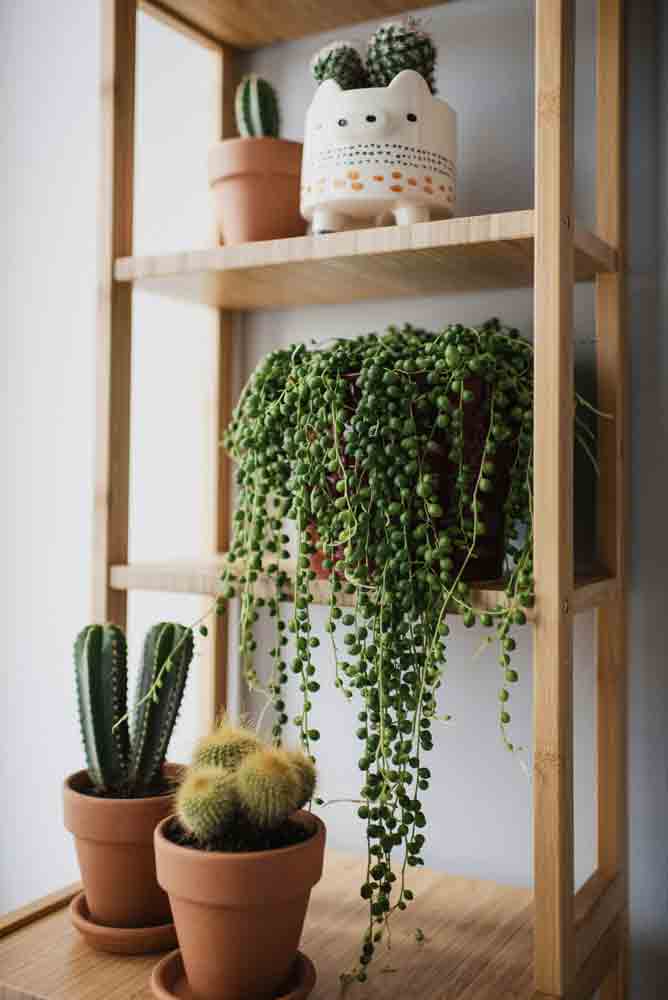
9. String of Hearts (Ceropegia Woodii)
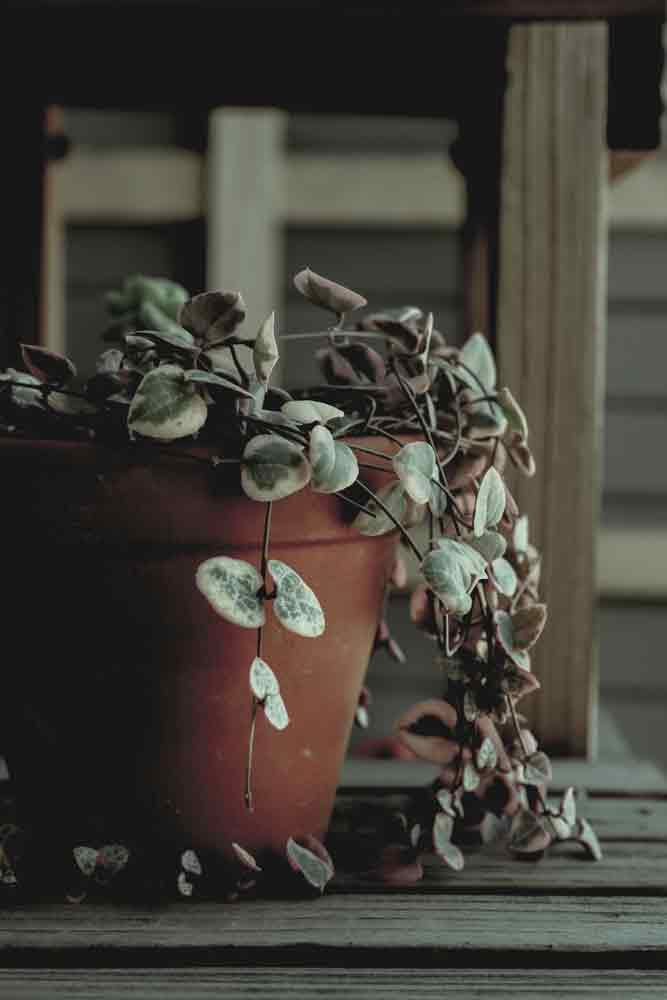
- The String of Hearts, also known as the Rosary Vine or Chain of Hearts, is a beautiful trailing plant cherished for its delicate, heart-shaped leaves and cascading vines. Native to South Africa, it’s a semi-succulent that thrives with minimal care, making it perfect for beginners and seasoned plant lovers alike.
- Leaves: Small, heart-shaped leaves with a silvery-green marbled pattern. The undersides of the leaves often display a pink or purple hue.
- Vines: Thin, trailing vines that can grow up to 3-6 feet long, creating a stunning cascading effect in hanging planters.
- Flowers: Produces tiny tubular flowers in shades of purple or pink, resembling little lanterns.
10. Burro’s Tail (Sedum Morganianum)
- With its cascading stems of plump, green leaves, Burro’s Tail is a beginner-friendly succulent that thrives in hanging baskets or elevated planters.
- Care Tip: Handle gently to avoid breaking its delicate leaves.
- Best Display: Place it in a hanging planter where its long, trailing stems can grow without obstruction.
- Low Maintenance: It’s drought-tolerant and needs minimal care, thriving in bright, indirect sunlight.
- Popular Varieties:
- Sedum Burrito: Smaller, tighter leaves than the standard Burro’s Tail.
- Slow Grower: While it grows slowly, patience is rewarded with lush, cascading foliage.
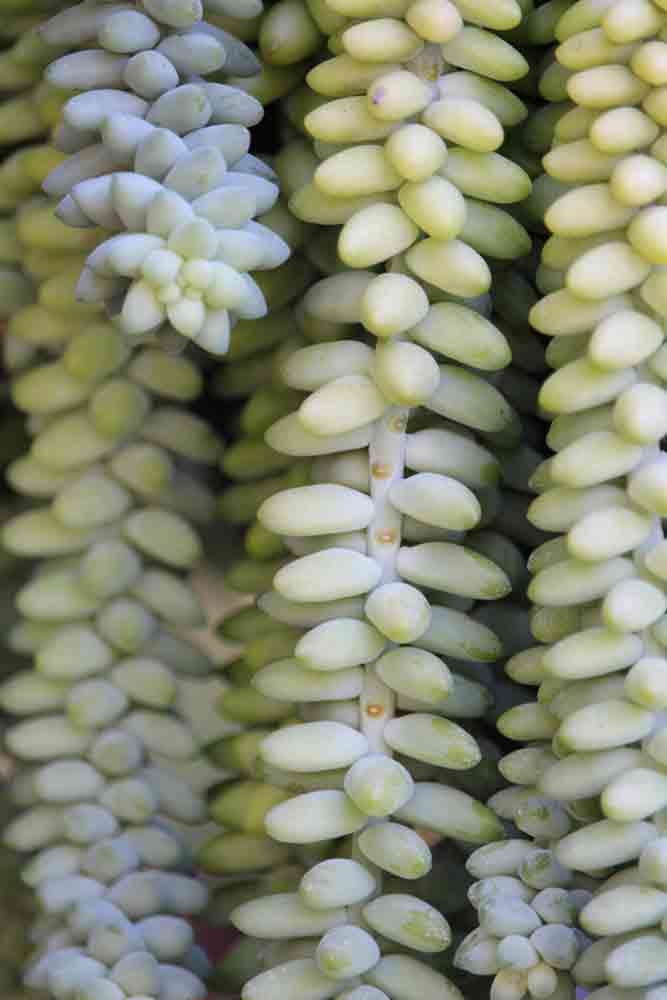
Related Posts
Korean Succulents
Want to keep up with our blog?
Get our most valuable tips right inside your inbox, once per month!
